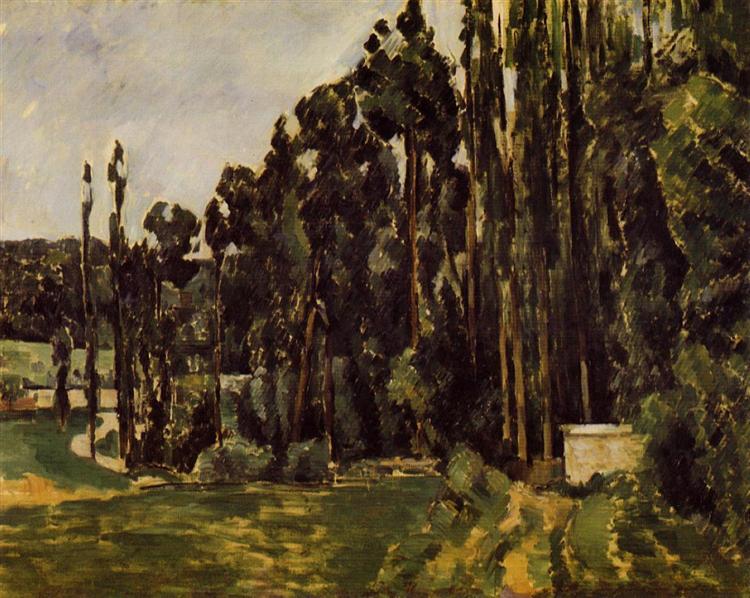Description
The work "Álamos - 1880" (also known as "Poplars - 1880") by Paul Cézanne is an outstanding example of the artist's distinctive approach to nature and the representation of the landscape. Located in the context of the transition between impressionism and post -impressionism, this painting encapsulates the search for Cézanne to capture the essence of form and color, while establishing a direct dialogue with the pictorial tradition.
When observing the painting, the first impression is that of a flooded landscape of light, where the poplars rise majestically against a sky that ranges between blue and white. The composition presents a carefully calculated balance, where the arrangement of the trees in the central axis is complemented by the horizontality of the terrain that extends to the bottom. This use of the structure creates a sense of depth and three -dimensionality, a recurring theme in Cézanne's work.
The poplars, with their characteristic robustness, are represented by loose brushstrokes, which reveal Cézanne's interest in texture and volume. Each line seems dynamic, incorporating almost sculptural quality into the work. The color palette is rich and varied, with intense green that defines vegetation, and terrible tones that provide stability to the landscape, indicating the artist's approach in natural light and its effect on color. These vibrant green contrast subtly with the most out of the terrain and heaven.
A fascinating aspect of "poplars - 1880" is the way in which the atmosphere feels tangible through the brushstroke. Cézanne is known for its innovative technique, where color layers overlap to create a sense of depth and emotional energy. This approach is evident in the representation of the light that filters between the leaves of the trees, suggesting the transience of the moment and the interaction of nature over time.
However, a distinctive feature of this work is the absence of human figures. In many Cézanne landscapes, you can find workers, peasants or figures that complement the environment, but here, the landscape occurs in their solitude, which gives the viewer an invitation to contemplate natural beauty without distractions. This choice to represent only the environment resonates with the artist's desire to communicate a deep relationship with the landscape.
Cézanne, through this work, also echoes the advances of its time in the perception of color and light, which transformed the artistic conventions of the nineteenth century. While impressionism had begun to explore the light and its effect on color, Cézanne brought this exploration even further, proposing an underlying geometry in nature and suggesting that every landscape can be decomposed in simple forms. "Alamos - 1880" is, therefore, a visual statement on modernity and the search for a new way of seeing.
The charm of "Álamos - 1880" lies in its ability to invite multiple readings, from an aesthetic appreciation of nature to a reflection on the artistic process itself. Each element, from the color selection to the compositional structure, speaks of a depth that invites the viewer to discover not only the intentionality of the artist, but also his love for nature and his desire to understand it through art. Thus, this work is in a prominent place within the evolution of modern art, laying the foundations for a new visual language in the landscape.
KUADROS ©, a famous paint on your wall.
Hand-made oil painting reproductions, with the quality of professional artists and the distinctive seal of KUADROS ©.
Reproduction service paintings With a guarantee of satisfaction. If you are not completely satisfied with the replica of your painting, we refund your money 100%.

